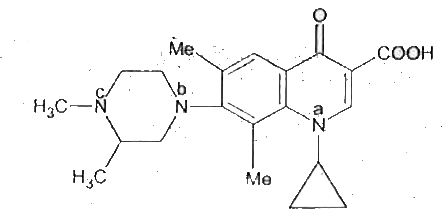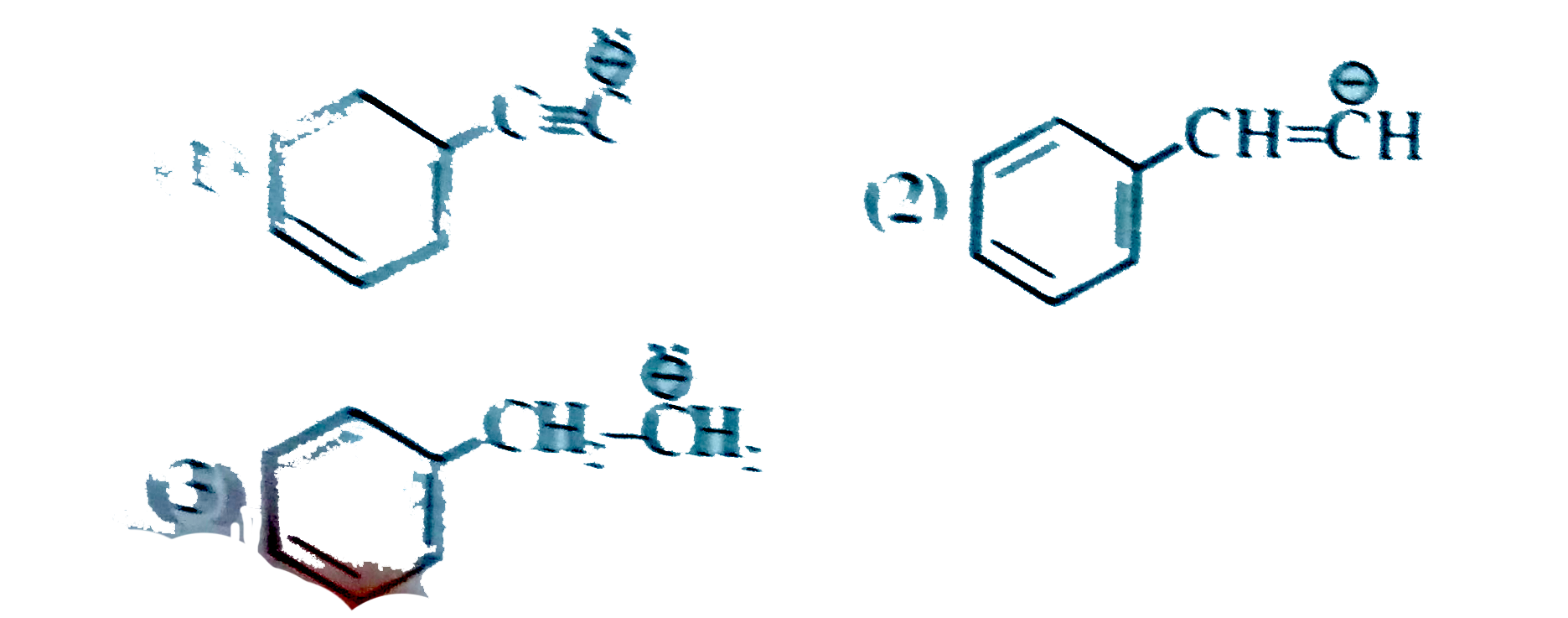Basic strength order of halide is :-
Cl−<Br–<I–<F–
F–<I–<Br–<Cl–
I–<Br–<Cl–<F–
Cl–<F–<I–<Br–
The correct Answer is:A
To determine the basic strength order of halides (fluoride, chloride, bromide, and iodide), we need to analyze the factors that influence their basicity. Here’s a step-by-step solution:
Step 1: Identify the Halides
The halides we are considering are:
- Fluoride (F^-)
- Chloride (Cl^-)
- Bromide (Br^-)
- Iodide (I^-)
Step 2: Understand Basicity
Basicity refers to the ability of a species to accept protons (H^+ ions). In the case of halides, the larger the halide ion, the more stable it is as a base because it can better accommodate the negative charge.
Step 3: Analyze Size and Bond Strength
As we move down the group in the periodic table from fluorine to iodine:
- The size of the halide ions increases (F^- < Cl^- < Br^- < I^-).
- The bond dissociation enthalpy decreases, meaning that it becomes easier to break the bond to release H^+ ions.
Step 4: Consider Electronegativity
Fluorine is the most electronegative element, which makes F^- a very stable ion. However, this high electronegativity also means that fluoride is less willing to donate its electron pair to bond with H^+, making it less basic compared to the other halides.
Step 5: Determine the Order of Basicity
Based on the size and bond strength:
- Iodide (I^-) is the least basic because it is the largest and can easily donate H^+.
- Bromide (Br^-) is more basic than iodide but less than chloride.
- Chloride (Cl^-) is more basic than bromide.
- Fluoride (F^-) is the most basic due to its ability to stabilize the negative charge despite its high electronegativity.
Conclusion: Basic Strength Order
Thus, the order of basic strength of halides is:
I^- < Br^- < Cl^- < F^-
Final Answer
The correct option is C: Iodide < Bromide < Chloride < Fluoride.
---
The halides we are considering are:
- Fluoride (F^-)
- Chloride (Cl^-)
- Bromide (Br^-)
- Iodide (I^-)
Basicity refers to the ability of a species to accept protons (H^+ ions). In the case of halides, the larger the halide ion, the more stable it is as a base because it can better accommodate the negative charge.
As we move down the group in the periodic table from fluorine to iodine:
- The size of the halide ions increases (F^- < Cl^- < Br^- < I^-).
- The bond dissociation enthalpy decreases, meaning that it becomes easier to break the bond to release H^+ ions.
Fluorine is the most electronegative element, which makes F^- a very stable ion. However, this high electronegativity also means that fluoride is less willing to donate its electron pair to bond with H^+, making it less basic compared to the other halides.
Based on the size and bond strength:
- Iodide (I^-) is the least basic because it is the largest and can easily donate H^+.
- Bromide (Br^-) is more basic than iodide but less than chloride.
- Chloride (Cl^-) is more basic than bromide.
- Fluoride (F^-) is the most basic due to its ability to stabilize the negative charge despite its high electronegativity.
Thus, the order of basic strength of halides is:
I^- < Br^- < Cl^- < F^-
The correct option is C: Iodide < Bromide < Chloride < Fluoride.
Topper's Solved these Questions
Similar Questions
Knowledge Check
Order of decreasing basic strengths of halides is :
AF−>Cl−>I−>Br−BF−>Cl−>Br−>I−CI−>Br−>CI−>F−DI−>Cl−>Br−>F−
What is the basic strength order of the marked (a, b and c) nitrogen in the above structure?

View SolutionThe correct basic strength order of following anions is:
View SolutionSelect the basic strength order of following molecules ?

View SolutionSelect the basic strength order of following molecules ?

View SolutionIdentify correct basic strength order of following compounds:-

View SolutionThe acid strength order is :

View SolutionCorrect basic strength order is :

View Solution

